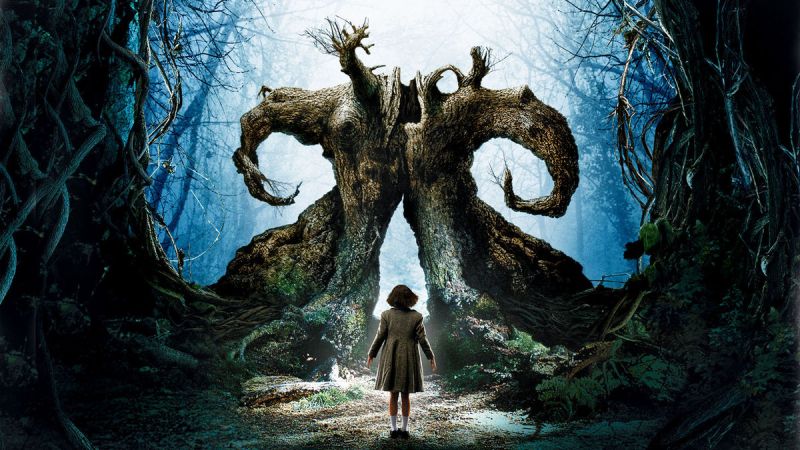There were two books that shaped the world of a young middle-class boy in Guadalajara Mexico, an encyclopedia of health and an encyclopedia of art.His obsession with the macabre seemed to grow from his interest in human anatomy and how the body is changed by diseases, which intermingled with the romanticist artists such as Fuseli, Caspar David Friedrich and Piranesi. “All these people became to me as much a part of my childhood imaginarium as comic-book illustrators.” He told The Guardian in 2015. His interest in dissecting the human body and the transformations that can occur within them transferred to art and literature, taking an artist’s work apart in order to understand the inner workings. It was 1992 when an independent Mexican film known as Cronos (1993) went into production. With only a two million dollar budget, first-time filmmaker Guillermo del Toro solidified his place in movie history by creating a work unlike anyone had ever seen. It took influence from a variety of sources that del Toro cites in depth; Throughout this one film, influences can be found ranging from Pope Silvester II, 1970s Mexican macabre jewelry , Greek mythological figures like Cronos the Titan King, famous Latin American literature, French alchemists, Bram Stoker’s Dracula, Christian lore, and so on Del Toro continues to utilize “hypertextuality” in all his films, which literary scholar George Landow defines as “one-to-many linking” , and the allowance of “textual openness, intertextuality and the irrelevance of distinctions between inside and outside a particular text”. Del Toro is constantly using his vast knowledge of references in this way when building the worlds and characters in each of his films. 
But what makes del Toro’s work unique and “creative” in comparison to other auteurs is found in how he recontextualizes the meaning of these references. He does not simply combine two different literary sources, but transforms what they mean entirely by subverting the audience’s expectations of them. Margaret Boden argues that creativity is divided into different subcategories known as combinatorial, exploratory and transformational, with the latter being the most “surprising” of the three and therefore the more impactful. The basis for transformational creativity having perceived dominance over the other forms comes from “radical changes to a space, not just small tweaks which Boden implies is a qualitative difference.”. Under this definition, del Toro’s work would be considered “less creative” since it utilizes already existing texts and so they are not “radically original ideas”. But what this definition does not clarify is the constraints of that space and how it makes it impossible for a work to become transformational unless it breaks the very rules of the space itself. Del Toro’s work is transformational within the medium of film as he completely flips familiar conventions on their head to the point where their original meaning is irrelevant outside the context of the film, indicating that creative output is not lessened by the constraining factor of the space as Boden’s theory hypothesizes.
In order to consider del Toro’s work as transformative, there needs to be a clear definition of what is considered a transformative space to work in, and how radical a change has to be to a space in order to become transformative. Boden does not clarify exactly how the “conceptual space” that creativity is to be made in is determined and even states it needs to be elaborated on. Graeme Ritchie’s Transformational Creativity Hypothesis (2006) attempts to determine the limits of Boden’s transformational space and how it could be defined. He comes to the conclusion that transformational creativity still has to work within a medium, for if it is altered too much, it can no longer be considered to be part of that medium. “The logically possible set of games is exactly the conceptual space, so no valid game of chess can display transformational creativity – the only way that a chess player can be transformationally creative is to invent new rules”. But if new rules are invented, it would no longer be considered a game of chess, in the same way if a film no longer utilized a video screen it can no longer be a film, or a fairy tale without a magical quest is not a fairy tale. Even Boden admits that creativity has to exist within constraints. “ It follows too, that constraints–far from being opposed to creativity—make creativity possible. To throw away all constraints would be to destroy the capacity for creative thinking”. If this is to be believed, del Toro’s work is transformative as it disobeys every single known convention in both textual literature and film to create a new meaning that an audience can infer, but still adhering to the constraints of the medium. Unlike other “auteurs” of his time, del Toro does not take an authoritarian role in his storytelling, he does not tell the audience how to view the story, only giving information through visuals. It is the audience that has power of meaning-making, not the filmmaker, which is counter-intuitive to what most are familiar with (Kotecki 243). In his magnum opus Pan’s Labyrinth (2006). There are many familiar references throughout the film, most prominently are a pair of red shoes worn by the child protagonist Ofelia that del Toro highlights in several shots. Film journalist and video essayist Evan Puschak discusses the references in his analysis, Pan’s Labyrinth: the Disobedient Fairytale (2015). Puschak states the shoes themselves are references to the glamourous fairy tales of The Wizard of Oz (1939) and The Red Shoes (1948), which is recontextualized when compared to the piles of children’s shoes found in the Pale Man’s lair, a monster that eats children. This is then recontextualized again as the shoes are reminiscent of the piles of clothes discovered in Nazi concentration camps, which is recontextualized when compared in the context of the wider story, as the villain in this tale is a fascist captain during the Spanish Civil War. The audience has to draw from their own repertoire of knowledge to decide exactly what they think the shoes represent. The meaning of this one symbol is transformed into meaning a variety of things, each is neither right or wrong , and hinges entirely on the viewer’s awareness or unawareness of these references. But the surprise comes in the comparison, in how the original meaning is now transformed and woven with other references that seem unlikely or even unthinkable.
“Surprise” is often described as something unexpected, a new discovery that leads to a feeling of astonishment. Del Toro’s films take every day familiar symbols and tropes and completely delimit the established meanings so that it becomes a completely unique and new experience, a discovery that is not lessened simply because it was built on existing material. There is no such thing as an original idea, the only thing original is how that idea is presented, and del Toro with his mastery of transforming the known into the unknown, is truly deserving of the title “artist”.




